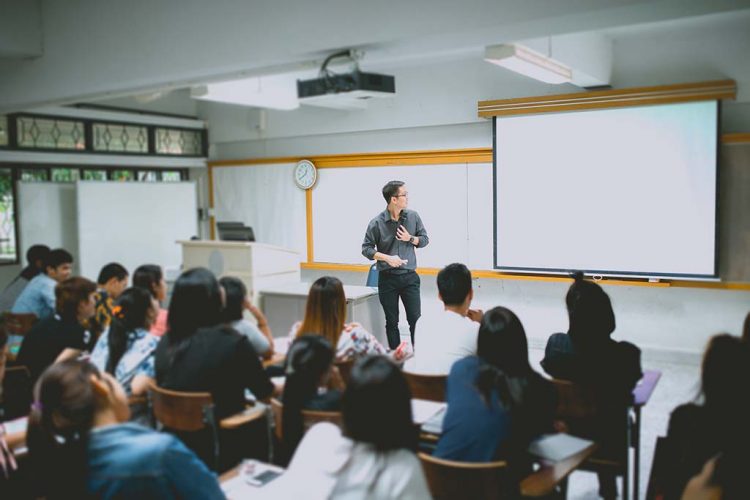Get Top Results with Primary Science Tuition Singapore from Experienced Tutors
Get Top Results with Primary Science Tuition Singapore from Experienced Tutors
Blog Article
A Comprehensive Guide to the Various Knowing Methods in Primary Scientific Research Guideline
The expedition of varied discovering techniques in main science direction presents an opportunity for educators to improve student engagement and understanding significantly. By checking out hands-on understanding techniques, inquiry-based methods, and collaborative methods, we can determine effective practices that accommodate numerous discovering styles. Additionally, the assimilation of innovation and distinguished guideline plays a critical function in fostering a comprehensive environment. The inquiry remains: just how can these methods be successfully implemented in the class to maximize their effect? The solution depends on a more detailed assessment of each strategy and its ramifications for training science.

Hands-On Knowing Strategies
Hands-on learning methods play a crucial role in main scientific research direction, involving students in active expedition and experimentation. These techniques permit learners to communicate straight with products and phenomena, cultivating a deeper understanding of clinical concepts. By utilizing manipulatives, versions, and real-life experiments, educators develop a setting where pupils can observe, hypothesize, and test their ideas.
Such techniques not only enhance comprehension but also cultivate vital reasoning and analytic abilities. When pupils take part in tasks like constructing simple machines, growing seeds, or performing chain reactions, they are urged to ask inquiries and look for solutions via their very own monitorings. This experiential strategy helps to demystify intricate clinical concepts, making them much more relatable and easily accessible.
Moreover, hands-on knowing promotes collaboration amongst peers, as students commonly operate in teams to perform experiments or share searchings for. This teamwork not just enhances their knowing experience but likewise develops essential social abilities. Eventually, incorporating hands-on methods in primary scientific research instruction cultivates a lifelong love of learning and inquisitiveness about the environment, laying a solid foundation for future scholastic quests in scientific research and beyond.
Inquiry-Based Learning
Inquiry-based understanding is a training approach that urges students to ask inquiries, check out phenomena, and create their own understanding of scientific ideas. This technique shifts the focus from traditional teacher-led direction to a more student-centered experience, where learners take the campaign in their educational journey. By cultivating curiosity, inquiry-based knowing advertises deeper interaction with the product, permitting students to check out subjects in a meaningful context.
In practice, this technique often includes hands-on experiments, monitorings, and critical thinking activities that line up very closely with the clinical method. Trainees are urged to formulate hypotheses, style examinations, and assess data, which cultivates necessary abilities such as problem-solving and analytical thinking. The duty of the educator in this framework is to assist in expedition, leading students with the questions procedure while urging independent idea and collaboration.
Furthermore, inquiry-based discovering nurtures a sense of possession over the learning process, inspiring pupils to seek understanding proactively. This method not only improves understanding of scientific principles but additionally promotes a long-lasting love for understanding, gearing up students with the skills necessary to navigate a significantly complicated globe.
Collaborative Understanding Approaches
Collaborative knowing methods equip students to participate in purposeful communications with peers, promoting a common duty for their instructional outcomes. In main scientific research instruction, these methods encourage learners to function with each other to explore scientific ideas, address problems, and carry out experiments (primary science tuition Singapore). By taking part in group activities, trainees can take advantage of varied perspectives, permitting richer understanding and retention of clinical expertise
One key aspect of collective understanding is the focus on communication skills. Pupils must verbalize their thoughts, pay attention proactively to others, and bargain ideas, all of which are essential competencies in both academic and real-world contexts. This social interaction not just improves their understanding of scientific principles but likewise advertises team effort and conflict resolution abilities.
When trainees see the value of their payments within a team, they are much more likely to take ownership of their knowing trip. In general, incorporating joint discovering approaches in key science guideline cultivates a dynamic understanding atmosphere that prepares students for future academic and social challenges.
Modern Technology Combination in Scientific Research
The combination of technology in main scientific research direction enhances learning experiences by supplying innovative devices and resources that support numerous teaching methods, including collaborative understanding - primary science tuition Singapore. Making use of digital systems, simulations, and interactive applications allows trainees Visit This Link to engage deeply with scientific principles, helping with a much more hands-on strategy to understanding
Virtual laboratories, as an example, enable learners to conduct experiments safely and effectively, promoting inquiry-based discovering. These devices can imitate real-world clinical circumstances, permitting pupils to visualize complex processes that would certainly be difficult to replicate in a traditional classroom setting. Furthermore, technology fosters communication and collaboration amongst pupils, as they can share searchings for and interact on projects through online platforms.
Furthermore, multimedia presentations and instructional video clips can enhance lessons by accommodating varied discovering styles, making abstract concepts more accessible. Information analysis tools additionally equip students to gather and interpret clinical data, reinforcing critical assuming skills. On the whole, the critical consolidation of modern technology in main science direction not only boosts engagement yet likewise prepares pupils for a technically advanced culture, equipping them with crucial skills for future clinical endeavors.
Set Apart Direction Approaches
Distinguished instruction methods are essential for resolving the diverse requirements of learners in main science education. These approaches enable teachers to customize their teaching approaches to accommodate differing abilities, passions, and learning designs within the class. By employing separated guideline, instructors can develop an inclusive atmosphere that cultivates engagement and enhances understanding of clinical concepts.
One efficient method is to make use of flexible organizing, which permits students to work together with peers at comparable skill degrees or with differing viewpoints. This strategy learn this here now motivates peer understanding and promotes important reasoning. Additionally, using selections in projects can encourage trainees, permitting them to select projects that resonate with their interests while still satisfying curricular goals.
In addition, incorporating tiered projects is one more important technique. Deliberately tasks with varying levels of complexity, educators can ensure that all trainees are properly tested, despite their proficiency. Utilizing formative assessments to evaluate understanding additional allows educators to adjust their instructional approaches dynamically, ensuring that each student gets the support they need.
Inevitably, applying separated instruction approaches in main science education and learning not only boosts student understanding results yet likewise grows an enthusiasm for scientific research, preparing trainees for future scholastic quests.

Final Thought
In summary, reliable main scientific research direction necessitates a complex method that encompasses hands-on understanding, inquiry-based techniques, and joint methods. The integration of modern technology and distinguished guideline even more provides to diverse understanding styles, cultivating an environment helpful to exploration and essential thinking. By applying these techniques, instructors can enhance trainee engagement and comprehension, inevitably nurturing a lifelong interest for science and query. Such thorough approaches are crucial for creating informed and curious future researchers.
The expedition of varied understanding approaches in key scientific research guideline offers a possibility for instructors to boost pupil involvement and understanding dramatically.Hands-on understanding strategies play an essential function in main science instruction, engaging pupils in energetic expedition and testing.Inquiry-based knowing is an instructional approach that urges pupils to ask concerns, examine phenomena, and construct their very own understanding of Continue clinical ideas.Collaborative learning strategies equip trainees to engage in purposeful interactions with peers, fostering a common obligation for their educational end results. On the whole, integrating collaborative understanding methods in primary scientific research direction grows a dynamic knowing setting that prepares trainees for future academic and social obstacles.
Report this page